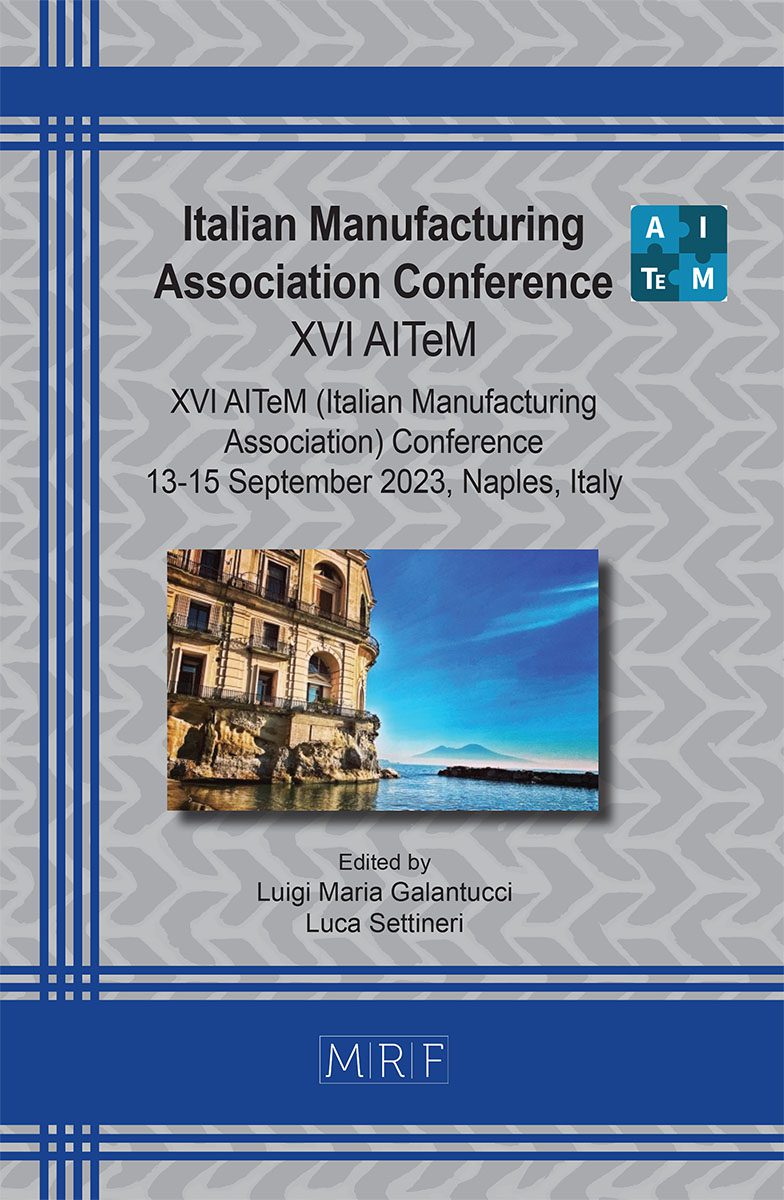Process parameters optimization in fused deposition modeling of polyether ether ketone
Emanuele Vaglio, Erica Billè, Marina Franulović, Alessandro Gambitta, David Liović, Alfredo Rondinella, Marco Sortino, Giovanni Totis
download PDFAbstract. Fused Deposition Modeling is increasingly used for producing high-performing, creep-resistant, biocompatible, fireproof, highly-stable parts from polyether ether ketone. However, the knowledge on this process is still poor and fragmented, and the lack of relevant data inhibits many applications. In this paper, the effects of the nozzle temperature, nozzle speed and layer thickness on the properties of PEEK processed by Fused Deposition Modeling were investigated by performing indentation, tensile, Scanning Electron Microscope, Computer Tomography and Energy Dispersive X-ray Spectroscopy tests on as-built samples. The outgassing behavior was also analyzed, while the synchrotron radiation was used to characterize the structure of selected samples on a hitherto unexplored scale. The samples morphology was finally used to identify the optimal process window. The results provided new insights on the process and novel data enabling new applications.
Keywords
Additive Manufacturing, Material Extrusion, Process Parameters Optimization
Published online 9/5/2023, 9 pages
Copyright © 2023 by the author(s)
Published under license by Materials Research Forum LLC., Millersville PA, USA
Citation: Emanuele Vaglio, Erica Billè, Marina Franulović, Alessandro Gambitta, David Liović, Alfredo Rondinella, Marco Sortino, Giovanni Totis, Process parameters optimization in fused deposition modeling of polyether ether ketone, Materials Research Proceedings, Vol. 35, pp 182-190, 2023
DOI: https://doi.org/10.21741/9781644902714-22
The article was published as article 22 of the book Italian Manufacturing Association Conference
![]() Content from this work may be used under the terms of the Creative Commons Attribution 3.0 license. Any further distribution of this work must maintain attribution to the author(s) and the title of the work, journal citation and DOI.
Content from this work may be used under the terms of the Creative Commons Attribution 3.0 license. Any further distribution of this work must maintain attribution to the author(s) and the title of the work, journal citation and DOI.
References
[1] S.M. Kurtz, PEEK biomaterials handbook, second ed., William Andrew Publishing, 2019.
[2] R. Dua, Z. Rashad, J. Spears, G. Dunn and M. Maxwell, Applications of 3d-printed peek via fused filament fabrication: A systematic review, Polymers 13 (2021) 4046. https://doi.org/10.3390/polym13224046
[3] S. Ding, B. Zou, P. Wang and H. Ding, Effects of nozzle temperature and building orientation on mechanical properties and microstructure of PEEK and PEI printed by 3D-FDM, Polym. Test. 78 (2019) 105948. https://doi.org/10.1016/j.polymertesting.2019.105948
[4] P. Sikder, B.T. Challa and S.K. Gummadi, A comprehensive analysis on the processing-structure-property relationships of FDM-based 3-D printed polyetheretherketone (PEEK) structures, Materialia 22 (2022) 101427. https://doi.org/10.1016/j.mtla.2022.101427
[5] W. Wu, P. Geng, G. Li, D. Zhao, H. Zhang, and j. Zhao, Influence of layer thickness and raster angle on the mechanical properties of 3D-printed PEEK and a comparative mechanical study between PEEK and ABS, Materials 8 (2015) 5834-5846. https://doi.org/10.3390/ma8095271
[6] M. Vaezi and S. Yang, Extrusion-based additive manufacturing of PEEK for biomedical applications, Virtual Phys. Prototyp. 10 (2015) 123-135. https://doi.org/10.1080/17452759.2015.1097053
[7] A. Lee, M. Wynn, L. Quigley, M. Salviato and N. Zobeiry, Effect of temperature history during additive manufacturing on crystalline morphology of PEEK, Adv. Ind. Manuf. Eng. 4 (2022) 100085. https://doi.org/10.1016/j.aime.2022.100085
[8] C. Yang, X. Tian, D. Li, Y. Cao, F. Zhao and C. Shi, Influence of thermal processing conditions in 3D printing on the crystallinity and mechanical properties of PEEK material, J. Mater. Process. Technol. 248 (2017) 1-7. https://doi.org/10.1016/j.jmatprotec.2017.04.027
[9] A. El Magri, K. El Mabrouk, S. Vaudreuil, H. Chibane and M.E. Touhami, Optimization of printing parameters for improvement of mechanical and thermal performances of 3D printed poly (ether ether ketone) parts, J. Appl. Polym. Sci. 137 (2020) 49087. https://doi.org/10.1002/app.49087
[10] F. Zhao, D. Li and Z. Jin, Preliminary investigation of poly-ether-ether-ketone based on fused deposition modeling for medical applications, Materials 11 (2018) 288. https://doi.org/10.3390/ma11020288
[11] K. Okumura, Y. Tanaka and K. Iwai, Effect of Viscosity and Surface Roughness on Improvement of Solid-liquid Wettability by Ultrasonic Vibration, ISIJ Int. 62 (2022) 2217-2224. https://doi.org/10.2355/isijinternational.ISIJINT-2022-268
[12] E.A. Papon, A. Haque and S.B. Mulani, Process optimization and stochastic modeling of void contents and mechanical properties in additively manufactured composites, Compos. B: Eng. 177 (2019) 107325. https://doi.org/10.1016/j.compositesb.2019.107325
[13] H.A. Sturges, The choice of a class interval, J. Am. Stat. Assoc. 21 (1926) 65-66. https://doi.org/10.1080/01621459.1926.10502161












